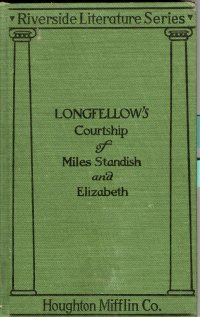 I got this book as part of a book order back when ABC Books and everything else was in a timeout in 2020. I’ve picked up a number of similar editions and have grouped them together, so maybe I’ll be reading elementary school textbook poetry a bunch this year.
I got this book as part of a book order back when ABC Books and everything else was in a timeout in 2020. I’ve picked up a number of similar editions and have grouped them together, so maybe I’ll be reading elementary school textbook poetry a bunch this year.
So: This book collects a number of Longfellow’s poems, including “The Courtship of Miles Standish”, “Elizabeth”, and some shorter ones. In “The Courtship of Miles Standish”, the military captain of the struggling Plymouth colony loses his wife in the first winter and asks his friend John Alden to ask Priscilla for her hand in marriage–but John and Priscilla already have eyes for each other.
In “Elizabeth”, a settler is taken with a travelling preacher, and he returns her affection. The poem includes a bit of a parallel between the maidservant and the hired man.
“Enceladus”, which I read like James Hetfield singing it. I mean, can’t you see Lovecraft taking some inspiration from this?
Under Mount Etna he lies,
It is slumber, it is not death;
For he struggles at times to arise,
And above him the lurid skies
Are hot with his fiery breath.
And:
They talk together and say,
“To-morrow, perhaps to-day,
Euceladus will arise!
And the old gods, the austere
Oppressors in their strength,
Stand aghast and white with fear
At the ominous sounds they hear,
And tremble, and mutter, “At length!”
The other short poems include the standard landscapes and a paean to John Greenlead Whittier delivered during a dinner in the latter’s honor. I remark on this because I was just telling my wife about how I confuse him with James Whitcomb Riley. I was talking about Whittier because “Elizabeth” comes from a collection of poetical stories told by travellers thrown together at an inn (Tales of a Wayside Inn) much like The Canterbury Tales by Chaucer or Tent on the Beach by Whittier (or is it Riley?) which I started in one of these early 20th century editions but put aside.
So, yeah, one can draw a pretty direct line from Chaucer and Shakespeare to Longfellow. He draws from real sources for his stories and writes of events from hundreds of years prior for his narratives. His poetry style is breezy, hexameter with some end rhymes (I know, “Enceladus” above does, but “The Courtship of Miles Standish” and “Elizabeth”, also known as “The Theologian’s Tale”, do not). The other work bears the influences of the English Romantic movement and probably Whittier (although I have not actually read enough of his work yet to know too much about it).
“The Courtship of Miles Standish” and some of the other poems have footnotes–“The Courtship of Miles Standish” has a bunch of them, taking up half of some pages, where the editor of this textbook, not the poet, defines some terms, highlights allusions to other work, or identifies historical records which corroborate the narrative. I read many of them and said, “I already know that,” but it is an elementary school textbook (!). One that I read in the middle of “The Courtship of Miles Standish” indicated, for example, that Bradford’s history of Plymouth mentioned Priscilla was a real person who married John Alden and had eleven children with him. Which is to say, the footnote contained a spoiler alert just when the poem was getting good.
The book also has some other educational material, including a short introduction and study helps like ideas for lessons based on the book which I just skimmed.
I enjoyed the book, and I enjoyed The Song of Hiawatha when I read it six years ago (!). As I said, I’ll probably read another couple of the like this year.
And I mentioned it was an elementary textbook almost 100 years ago. Here’s the little girl’s name:
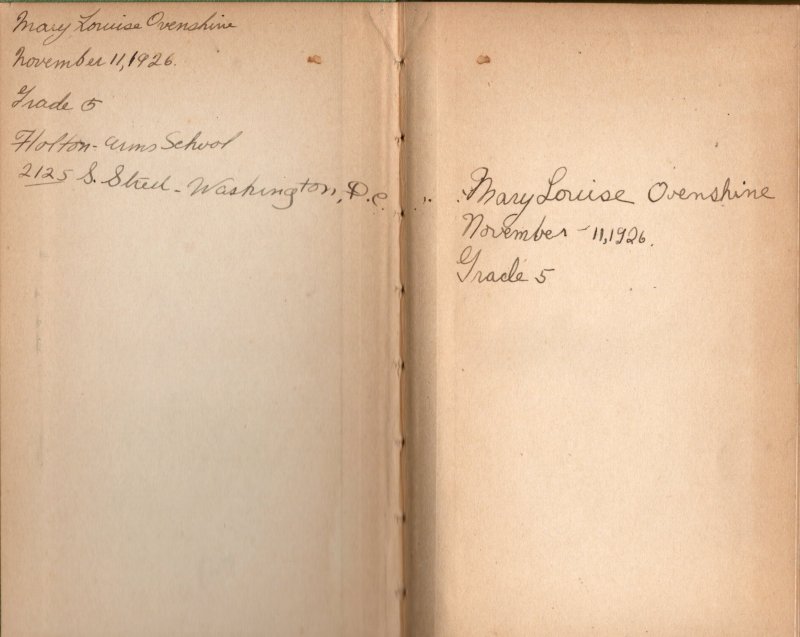
I found the obituary for that little girl, who died at 90 in 2007. You know, a lot of times books have inscriptions or names in them, but finding this particular obituary made reading the book poignant indeed. After all, I am but a temporary owner of it as well, and I’m not even leaving my mark in the book itself.



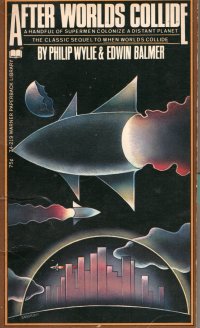 When I bought this book
When I bought this book  Gentle reader, I picked up this book to consider it for the
Gentle reader, I picked up this book to consider it for the  Gentle reader, I cannot find this book in a Good Book Hunting post, and I apologize as I know you, like I, relish the chance to revisit when and where I bought a particular book in the last 20 years. Now, as this is a 2019 book, clearly I did not buy the book before starting the Good Book Hunting posts. As it is in very nice shape and has no penciled prices in it, I have to guess I bought this new, perhaps as part of spending Christmas gift card or picked up while picking up Christmas gift cards. It has all the marks (figurative) of browsing the local interest section of the book store. Or perhaps I am a kleptomaniac who stoled it and don’t remember doing so.
Gentle reader, I cannot find this book in a Good Book Hunting post, and I apologize as I know you, like I, relish the chance to revisit when and where I bought a particular book in the last 20 years. Now, as this is a 2019 book, clearly I did not buy the book before starting the Good Book Hunting posts. As it is in very nice shape and has no penciled prices in it, I have to guess I bought this new, perhaps as part of spending Christmas gift card or picked up while picking up Christmas gift cards. It has all the marks (figurative) of browsing the local interest section of the book store. Or perhaps I am a kleptomaniac who stoled it and don’t remember doing so.
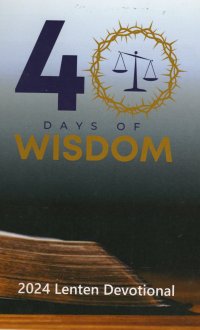 For the past several years, the church I attend has put together a Lent (and maybe Advent) devotion book written by members of the congregation. Full disclosure: My beautiful wife contributed three devotions this year. This is the first time I picked up a copy and went through it, not day-by-day but in spurts where I would read several days’ worth to catch up, read the day’s, and then read a couple of days ahead. To be honest, I am not the target market for devotionals, although I have given several as Christmas gifts–my mother-in-law reads several daily, including one that I have her several years ago that she re-reads every year.
For the past several years, the church I attend has put together a Lent (and maybe Advent) devotion book written by members of the congregation. Full disclosure: My beautiful wife contributed three devotions this year. This is the first time I picked up a copy and went through it, not day-by-day but in spurts where I would read several days’ worth to catch up, read the day’s, and then read a couple of days ahead. To be honest, I am not the target market for devotionals, although I have given several as Christmas gifts–my mother-in-law reads several daily, including one that I have her several years ago that she re-reads every year.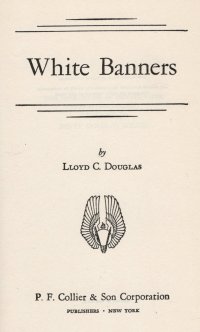 Ah, gentle reader. I read Douglas’s Home for Christmas in
Ah, gentle reader. I read Douglas’s Home for Christmas in  Not to be confused with Bob Greene’s
Not to be confused with Bob Greene’s 
 This book is one of two that I bought by this local author in
This book is one of two that I bought by this local author in 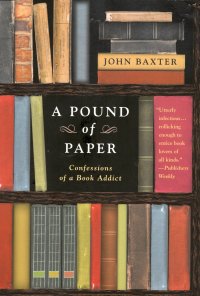 If I had found this book in time for the
If I had found this book in time for the 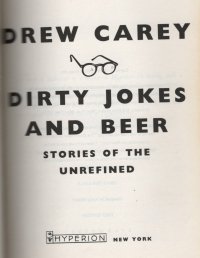 Wow, this book is almost thirty years old. I bought it at some point since then–the historical records (the blog here) are incomplete as to when, but the copy I have is a hardback without the dustjacket and has only the price marked in pencil on the frontspiece. The book, he acknowledges a with a smirk, is a bit of a money grab based on the popularity of his television show The Drew Carey Show during the Clinton administration.
Wow, this book is almost thirty years old. I bought it at some point since then–the historical records (the blog here) are incomplete as to when, but the copy I have is a hardback without the dustjacket and has only the price marked in pencil on the frontspiece. The book, he acknowledges a with a smirk, is a bit of a money grab based on the popularity of his television show The Drew Carey Show during the Clinton administration. I got this book
I got this book  Well, I could not have read this for the
Well, I could not have read this for the 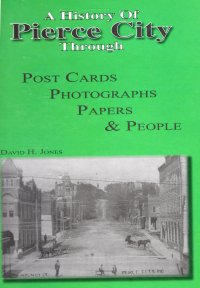 I bought this book at Rublecon
I bought this book at Rublecon 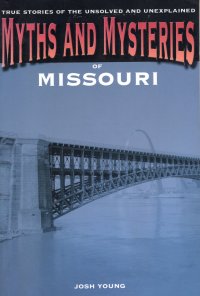 To be honest, I was a bit down on this book when I first started reading it. The first chapter is about Jim the Wonder Dog, and I just read a whole book about him
To be honest, I was a bit down on this book when I first started reading it. The first chapter is about Jim the Wonder Dog, and I just read a whole book about him 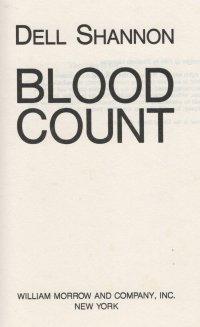 Geez, Louise, it’s been a while since I’ve read an Elizabeth Linington book (Dell Shannon being one of her pen names). I mean, I read a number of them in high school, either because the Community Library in High Ridge stocked them or because I borrowed some from my grandma (who owned some which I inherited in a roundabout fashion–and now that I think of it, my grandma died about the same time as “Elizabeth Linington”, and I never saw the two of them in the same place at the same time….) I know I have The First Linington Quartet around here somewhere, which I inherited from my grandma through my sainted mother. I must have read it right before I began blogging and doing book reports, because I kind of poop on her work in early book reports on this blog (
Geez, Louise, it’s been a while since I’ve read an Elizabeth Linington book (Dell Shannon being one of her pen names). I mean, I read a number of them in high school, either because the Community Library in High Ridge stocked them or because I borrowed some from my grandma (who owned some which I inherited in a roundabout fashion–and now that I think of it, my grandma died about the same time as “Elizabeth Linington”, and I never saw the two of them in the same place at the same time….) I know I have The First Linington Quartet around here somewhere, which I inherited from my grandma through my sainted mother. I must have read it right before I began blogging and doing book reports, because I kind of poop on her work in early book reports on this blog (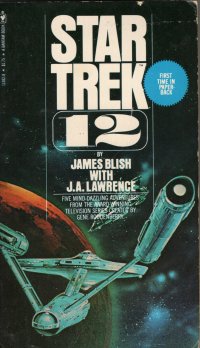 I was mistaken
I was mistaken 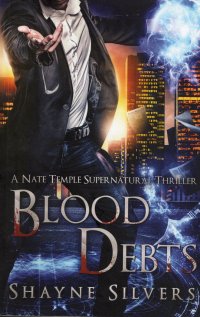 All right, all right, all right. I am really stretching here. The
All right, all right, all right. I am really stretching here. The 
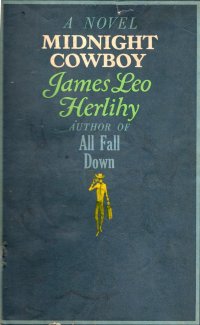 For some reason, I kinda remembered that this book was a gritty look at New York City and the main character was a prostitute who serviced both male and female clients. Actually, I must have read something about the movie somewhere (I mention the film compared to
For some reason, I kinda remembered that this book was a gritty look at New York City and the main character was a prostitute who serviced both male and female clients. Actually, I must have read something about the movie somewhere (I mention the film compared to 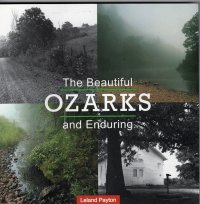 To be honest, gentle reader, this volume does not slot into the
To be honest, gentle reader, this volume does not slot into the  The
The